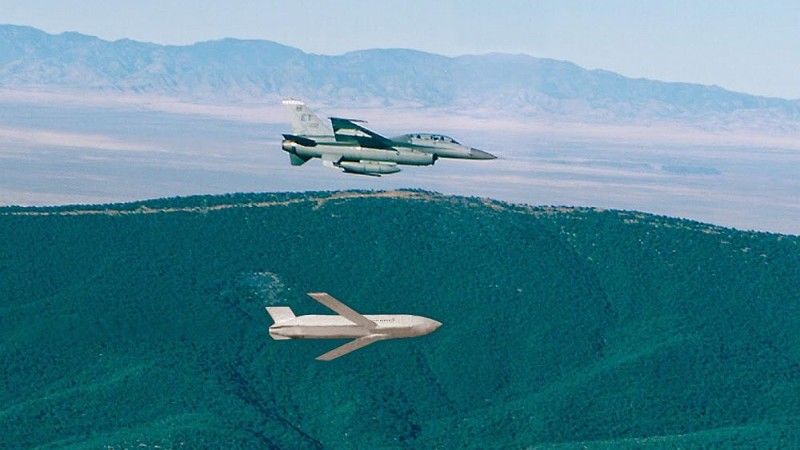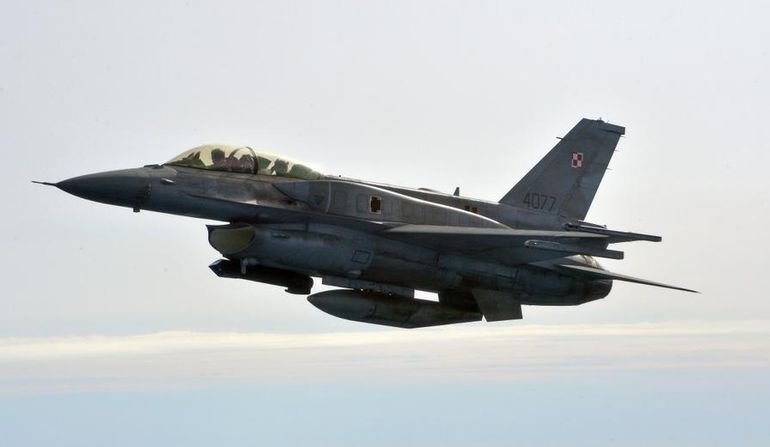Poland has been granted approval for the purchase of 40 JASSM cruise missiles and the upgrade of the F-16 fighters for the amount of up to 500 mln U.S. dollars. – We are negotiating a price twice lower compared to what was published in the US announcement concerning missiles and modernization of F-16 - says deputy Minister of National Defense, Czesław Mroczek. Simultaneously he informs that the contract is to be signed by 15th December. What remains an open question is whether Poland does need that weapon and also whether the price of it is adequate to its capabilities. JASSM is more than just a missile. It means both capability of destroying targets and deterring. – says Joseph Breen, International Business Development Director of Lockheed Martin in Missiles and Fire Control.
There are controversies for instance about the amount quoted by the State Department. Commentators often compare it with the value of 70 JASSM missiles for Finland, which - according to the DSCA information for the U.S. Congress - was lower almost by a half. Polish Ministry of Defence says negotiations are underway and the quoted amount of half a billion U.S. dollars is too high.
First of all it needs to be stressed that this is a maximal, not extendible figure. The price negotiated between the governments... Well, I can not tell too much, but it will surely be far from the maximum of 500 million dollars.
On the other hand, there are already visible first political and strategic effects of the decision to purchase the cruise missiles. The Russians have re-located the planned air base in Belarus 250 km to the East, what is supposed to be linked with the Polish JASSM purchase.
JASSM - a joint air to ground missile for the U.S. Navy and Air Force
JASSM is acronym for „Joint Air-to-Surface Standoff Missile” which means a common (for the U.S. Air Force and the U.S. Navy) stand-off missile, i.e. that is fired from beyond the range of the enemy's air defense. The AGM-158A JASSM is a winged cruise missile with lowered radar signature, powered by a turbojet engine, giving it more than 370 km range. The precise range of the weapon has not been disclosed by the manufacturer, as have not been some other technical specifications. The Defence24 has not been able to learn for instance whether the missile is capable of terrain adaptive flight-path, which hinders detection and elimination of the missile on its way to target.
The JASSM does not have to fly low and evade threats because of the stealth technology that it incorporates. It can therefore achieve much larger range.
The argument quoted above is not very convincing, as for example the Taurus KEPD 350 missiles, made by Germany and Sweden, have both the lowered radar cross-section and are capable of terrain adaptive flight. On top of that, their range exceeds 500 km. It is likely that their American analogue does not feature this capability, due to limitations of its navigation and control system.
As to the JASSM guidance system, it consists of inertial navigation system, supported by GPS, and infra-red seeker activated in terminal phase of the flight, enabling target identification and precision strike, with accuracy - according to the manufacturer's data - of about 2,5 meters. Target destruction provides a 450 kg penetrator warhead, which may explode - depending on the target's characteristics - upon contact or after penetration.
The data about the target, flight parameters and other significant factors are uploaded to the missile before the mission. The pilot can change the target or flight plan when needed using the datalink, but only until the missile is fired. From the launch, the guidance system does not accept any commands and fulfills the pre-planned flight plan. The F-16 aircraft is capable of carrying two JASSM missiles.
The air-to-ground cruise missiles as complex and relatively costly weapon systems are used to destroy crucially important targets. They're not design to disable an armored column or enemy troop concentration. Their targets should be for instance command posts, ballistic missiles batteries (such as the Russian Iskander system), materiel bases or air strips. Joseph Breen, Business Development Director at Missile and Fire Control department of Lockheed Martin company emphasizes, that a JASSM significantly increases the deterrent capabilities of the armed forces.
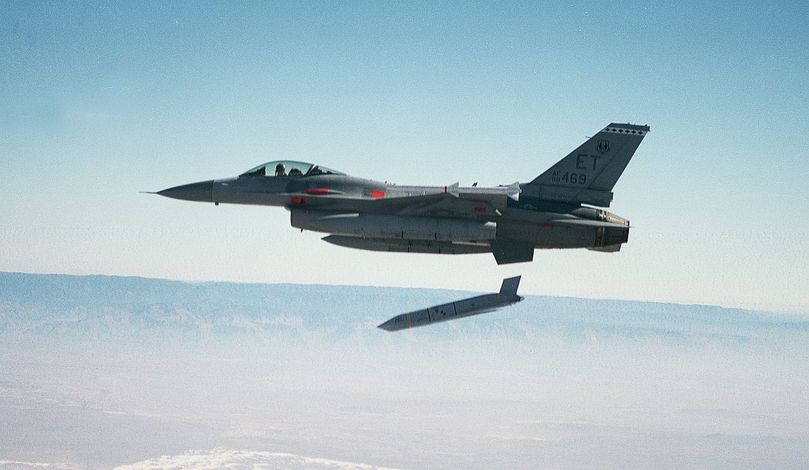
(...)it's the deterrence opportunities provided by this weapon system. It makes the enemy think twice on any aggressive action, because of the JASSM's capabilities. Precision strike capability on valuable targets and indifference of their selection. It gives strategic deterrent capability.
The JASSM's newer version, marked as AGM-158B JASSM-ER (JASSM-Extended Range) has similar battle-profile, but its range exceeds 900 km. Poland is interested in the missiles of extended range, but at the moment they are produced only for the needs of the U.S. Air Force.
500 mln dollars - the maximum value of the deal
After the publication of the Oct.2nd announcement by the DSCA - the government agency overseeing the weapons exports from the U.S. - about the possible sale of JASSM missiles to Poland, a controversy arose among the commentators on the conveyed amount - of 500 mln U.S. dollars. This however is not the final value of the contract or the offer, but the top limit of the total for which the transaction may be concluded after congressional permit.
The announcement about the State Department's approval, in which the 500 mln dollars figure is mentioned, is an element of the FMS (Foreign Military Sales) procedure, regarding the weapons exports from the United States. Each transaction, including that on the JASSM missiles, has to go through a multi-level decision making process, in which the State Department and the U.S. Congress are involved. One of its elements is the announcement, like the one about the JASSM's for Poland, describing the total value and the art of the equipment of the contract in question.
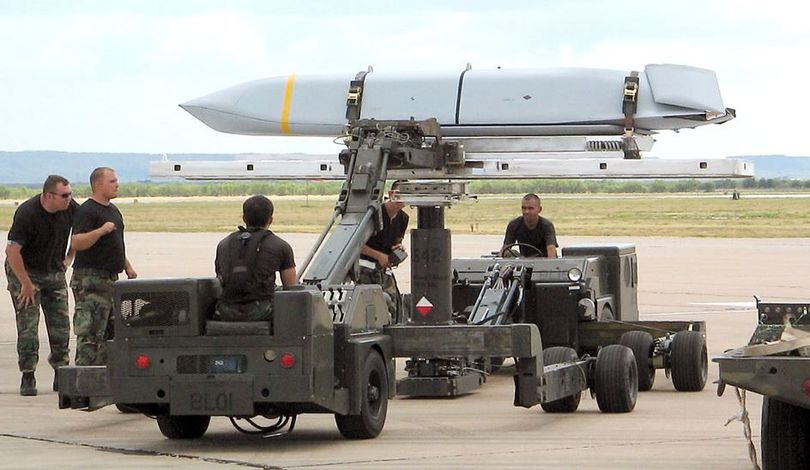
Within the FMS framework, the concrete value and scope of the contract are negotiated. The contract is concluded between the United States government and the interested country and the manufacturer is not a party of the contract.
The approval of the Polish request for the JASSM missiles in the FMS framework has been dealt with in a minimal time required by the law, which may not be the case in the future. The contract's final price and conditions have been just negotiated by a delegation of the Armament Inspectorate and the Ministry of National Defense. As we have learned in the Ministry, Poland has received already three offers and the latest round of talks took place in the U.S. late October.
We will get a good price for the missiles. (…) We are negotiating a price twice lower compared to what was published in the US announcement concerning missiles and software modernization of F-16. Simple message – it will not be more than the Finns have paid.
During the recent press conference Deputy Minister was able to provide a specific procurement timeline. On 30th November the Americans will send a unilaterally signed LOA (Letter of Acceptance) to Poland, which is to be treated as the final agreement. Conclusion of the agreement is planned to happen by 15th December this year. Negotiations are conducted at a rapid pace, but great care is taken about the pricing issue.
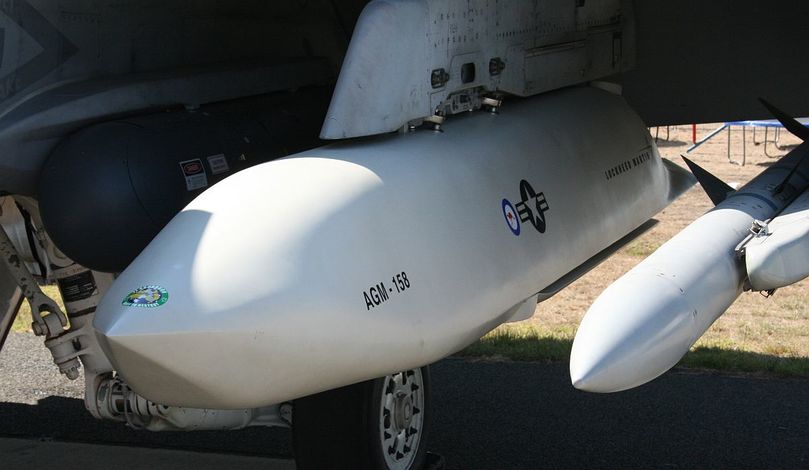
The offer for Poland vs JASSM for Finland
After the State Department's approval for the sale to Poland of the package of JASSM missiles has been published, some commentators confronted the estimated value of the Polish contract for 40 missiles with a similar transaction for Finland, approved by the DSCA in 2012. The maximum value cap of the contract for 70 JASSM missiles for Finland plus supplementary equipment has been set at 255 mln U.S. dollars, which is compared to the 500 mln offer in case of Poland. Lockheed Martin's representatives however are pointing out that the potential contract for Poland also includes the F-16 fighters upgrade.
The Polish JASSM package includes the software, modifications and testing of the F-16's, verification and certification as well as - of course - the missiles themselves. It was different in case of Finland, because Lockheed Martin has sold only the JASSM missiles.
They also indicate that the F/A-18 Hornet aircraft, on which the Finns are integrating the JASSM missiles, are manufactured by Boeing company, so Lockheed Martin is only supplying the missiles and their maintenance. The Finnish government along with the U.S. Navy, the American administration and the Boeing company is implementing a testing program and adjusting their fighters for carrying new missiles under a separate contract. In Lockheed Martin's view it isn't fair to compare the figures from the FMS documents for Poland and Finland because of the differences in the scale of the potential contract, as the Polish Air Force is to receive within the contract a modernization package for the F-16 C/D fighters.
M6.5 - F-16 upgrade package
The upgrade of the multirole aircraft F-16 C/D Falcon contributes a key component of the United States offer, also from the financial point of view, for the contract in question. According to information that Defence24.pl obtained from the Lockheed Martin, the works will cover larger spectrum than just adaptation to carrying the JASSM missiles. The upgrade is known as the M6.5 tape.
The package marked as M6.5 is dedicated for the European users of the F-16 fighters and includes many changes, primarily within software and the mission computer components (the MMC - Multi Mission Computer), which will gain faster data-processing capability and will support options like the Universal Armament Interface (UAI). The UAI will not only widen the available weapons set but introduces a new standard, enabling easier integration next generation precision-guided weaponry on the aircraft that use it.
The Polish Falcons will also receive a new friend-foe identification system, working in the Mode 5 and a GPS sat-nav module which is more resistant to jamming. The upgrade of the datalink protocol Link 16 will enable quicker transmission and will raise the battlefield awareness of the crew as well as communications security. In the premise it will allow the Polish F-16's to be active in the network-centric battle management systems.
The Lockheed Martin have denied the information about the alleged F-16's radar modernization to AESA standard and other advanced avionics systems modifications. As we've learned, the Defense Ministry was not interested in upgrading Polish planes to the F-16V version, but the tape M6.5 makeover was planned earlier.
Such information, obtained earlier by Defence24.pl from the Defense Ministry, confirmed Lockheed Martin Aero's representative Thomas E. Highsmith III. As the Defence24.pl has learned, provided the contract is concluded in the planned timeframe, the modernization works on the Polish F-16's will commence as early as Q1 2015 - on two "trial" aircraft. Integration and testing will be performed on them, in order to design a country-specific modernization package for the aircraft used in Poland. This comes from the differences among F-16 Fighting Falcon's operated by different countries.
The two "trial" F-16's will reach their initial operational capability (IOC), including the JASSM firing capability, in early 2017. From that moment, within the scheduled maintenance framework and other technical procedures, the Polish F-16’s will receive the tape M6.5 upgrade at a rate of two aircraft each month. Works are supposed to be done in Poland. They will consist in installation of elements of hardware and software delivered by the producer, as well as verification and certification of its operation readiness.
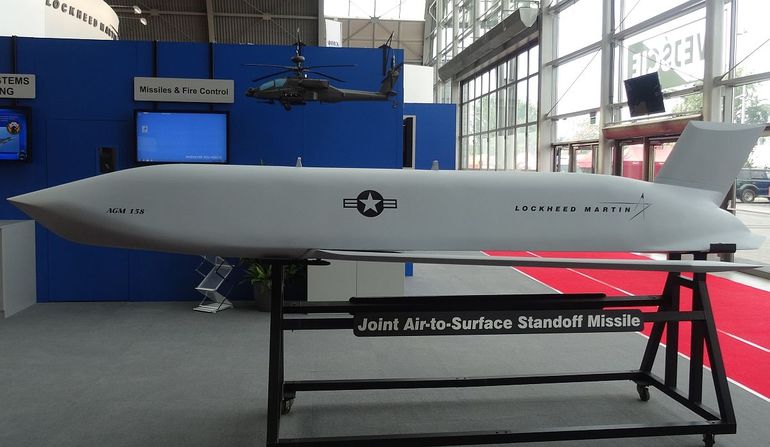
At the moment it is hard to make an unequivocal assessment of the JASSM missiles purchase plan by Poland, because of lack of real-terms cost and elements of the contract. The above analysis outlines only the known facts and estimations. But there are of course other systems on the market that could be interesting from the Polish perspective. For example, the Swedish-German Taurus KEPD 350 - providing operational capabilities similar to JASSM - may prove less expensive. The problem however is the Taurus' weight is one-third larger than of the JASSM. Two KEPD 350 missiles weight a ton more than two JASSM. The JSM missile from Kongsberg may also be attractive for the Polish Armed Forces, because it shares the design with the NSM missiles, operated by the Coastal Missile Division of the Navy. Those systems could be carrying out the same missions as the JASSM, however it's hard to assess their integration costs with the Polish F-16 C/D's. Therefore the final cost assessment is complicated, just like it is in the case of the Finnish F-18's and the JASSM missiles.
On the other hand, signals from the Defense Ministry and Lockheed Martin indicate that Poland is eventually interested in the JASSM-ER missiles of a 900 km range. This may be the reason for the relatively small number of the "classic" JASSM missiles in the negotiated package. Ultimately the modernized F-16’s will be capable of using both variants and with the approved acquisition package of 40 standard JASSM missiles for Poland, it will be easier in future to purchase an extended range batch of JASSM-ER missiles.
The interview with Joseph Breen, Business Development Director of Lockheed Martin Missile and Fire Control department - by Juliusz Sabak.
When did the opportunity emerge for Poland to buy JASSM missiles?
Lockheed Martin was made aware of Poland’s interest in JASSM in the late 2012 timeframe, however, government to government discussions could have been earlier than that.
Poland had intended to buy a large number of JASSM missiles at the start. The Defense Ministry was speaking about 200 missiles then. How did it happen that his number has shrunk five-fold?
The USAF informed Lockheed Martin that an initial request for 40 missiles was submitted by the Polish government. As with all Foreign Military Sales, quantities and pricing are negotiated intergovernmental. All we know comes from government sources. Total missiles purchased could be greater once details are negotiated. Lockheed Martin is ready to support whatever quantities may be needed.
Has the Polish government been in contact with Lockheed Martin on the issue of long-range missiles?
We have been told by the USAF that Poland is interested in both, baseline JASSM and JASSM-ER. Lockheed Martin will deliver on any missile agreement that is reached between the two governments.
As about the value of the Polish contract on JASSM missiles and supplementary systems, they're compared with the FMS for Finland and the same weapon type. Finland is to receive 70 missiles for a sum of 255 mln dollars. So, Poland is paying almost the double for significantly less missiles.
The published price of 500 mln dollars is not a missile total price. It is merely a not-to-exceed cap price that is being used to capture all of the elements of the sale. There are many other tasks included in this package negotiation, that were not part of other FMS sales in the past.
It's the same what minister Siemoniak says - that negotiations on the price will be tough...
- Certainly. They not only will be, they are, as we speak. I had talks in Warsaw with the Armament Inspectorate representatives and I met them in Orlando (the Lockheed Martin facilities in Florida) late October. Our role in this process as the manufacturer is submitting information and answering questions. Negotiations on the price are held between the governments of the United States and Poland. The authorities in Warsaw are separately talking with the American administration and with Lockheed Martin.
You've mentioned that Poland may be able also to acquire the JASSM-ER missiles. They have not been offered yet to any foreign client. How complicated it will be and how long do you think it may take to proceed with a potential JASSM-ER sale to Poland?
Exportability of JASSM-ER has to be determined at the US government level. As we know – this usually takes some time. Lockheed Martin has been told that this discussion is already underway, and we will deliver whichever missiles the US and Poland agree to purchase.
I see, and from the Lockheed Martin's perspective how long should fulfillment of such order take? Let's assume hypothetically that Poland signs a contract for 40 JASSM-ER missiles. How soon would you be able to deliver them to Poland?
- Purely theoretically, if such decision was taken today, we would need to include that in our production plan for the U.S. Air Force. JASSM missile production is based on annual production lots, or batches. If the US and Poland reach agreement, we will have to include that decision in the current Lot 13/14 contract negotiations with the USAF program office. The missiles would be produced in-line with domestic missiles and delivery would be conducted by the USAF, as required by the terms of Foreign Military Sales.
What new capabilities will the Polish Air Force receive with the JASSM missiles in your view?
A senior Finnish official was recently quoted when asked why Finland needed these missiles, “JASSM is more than a missile.” JASSM is just as much a deterrent capability, as it is a strike capability. It makes the enemy pause and think twice about aggressive action, because it provides precision strike of a wide range of valuable targets.
Don't you think that 40 JASSM missiles is a bit small number for such a deterrence? If one F-16 carries two missiles, it's a stockpile for one large air operation. And due to enemy's air defense systems, we have to dedicate more than one missile for each potential target.
- This is a decision that the Polish Defense Ministry has to assess and take. Militaries around the world have people that are responsible for strategic planning and threat analysis, and part of that planning is to determine the proper amount of assets needed for national defense. Lockheed Martin does not comment on matters of national or strategic policy, however, we stand ready to deliver that number of missiles which are needed for the defense of Poland.
When did the opportunity emerge for Poland to buy JASSM missiles?
Lockheed Martin was made aware of Poland’s interest in JASSM in the late 2012 timeframe, however, government to government discussions could have been earlier than that.
Poland had intended to buy a large number of JASSM missiles at the start. The Defense Ministry was speaking about 200 missiles then. How did it happen that his number has shrunk five-fold?
The USAF informed Lockheed Martin that an initial request for 40 missiles was submitted by the Polish government. As with all Foreign Military Sales, quantities and pricing are negotiated intergovernmental. All we know comes from government sources. Total missiles purchased could be greater once details are negotiated. Lockheed Martin is ready to support whatever quantities may be needed.
Has the Polish government been in contact with Lockheed Martin on the issue of long-range missiles?
We have been told by the USAF that Poland is interested in both, baseline JASSM and JASSM-ER. Lockheed Martin will deliver on any missile agreement that is reached between the two governments.
As about the value of the Polish contract on JASSM missiles and supplementary systems, they're compared with the FMS for Finland and the same weapon type. Finland is to receive 70 missiles for a sum of 255 mln dollars. So, Poland is paying almost the double for significantly less missiles.
The published price of 500 mln dollars is not a missile total price. It is merely a not-to-exceed cap price that is being used to capture all of the elements of the sale. There are many other tasks included in this package negotiation, that were not part of other FMS sales in the past.
It's the same what minister Siemoniak says - that negotiations on the price will be tough...
- Certainly. They not only will be, they are, as we speak. I had talks in Warsaw with the Armament Inspectorate representatives and I met them in Orlando (the Lockheed Martin facilities in Florida) late October. Our role in this process as the manufacturer is submitting information and answering questions. Negotiations on the price are held between the governments of the United States and Poland. The authorities in Warsaw are separately talking with the American administration and with Lockheed Martin.
You've mentioned that Poland may be able also to acquire the JASSM-ER missiles. They have not been offered yet to any foreign client. How complicated it will be and how long do you think it may take to proceed with a potential JASSM-ER sale to Poland?
Exportability of JASSM-ER has to be determined at the US government level. As we know – this usually takes some time. Lockheed Martin has been told that this discussion is already underway, and we will deliver whichever missiles the US and Poland agree to purchase.
I see, and from the Lockheed Martin's perspective how long should fulfillment of such order take? Let's assume hypothetically that Poland signs a contract for 40 JASSM-ER missiles. How soon would you be able to deliver them to Poland?
- Purely theoretically, if such decision was taken today, we would need to include that in our production plan for the U.S. Air Force. JASSM missile production is based on annual production lots, or batches. If the US and Poland reach agreement, we will have to include that decision in the current Lot 13/14 contract negotiations with the USAF program office. The missiles would be produced in-line with domestic missiles and delivery would be conducted by the USAF, as required by the terms of Foreign Military Sales.
What new capabilities will the Polish Air Force receive with the JASSM missiles in your view?
A senior Finnish official was recently quoted when asked why Finland needed these missiles, “JASSM is more than a missile.” JASSM is just as much a deterrent capability, as it is a strike capability. It makes the enemy pause and think twice about aggressive action, because it provides precision strike of a wide range of valuable targets.
Don't you think that 40 JASSM missiles is a bit small number for such a deterrence? If one F-16 carries two missiles, it's a stockpile for one large air operation. And due to enemy's air defense systems, we have to dedicate more than one missile for each potential target.
- This is a decision that the Polish Defense Ministry has to assess and take. Militaries around the world have people that are responsible for strategic planning and threat analysis, and part of that planning is to determine the proper amount of assets needed for national defense. Lockheed Martin does not comment on matters of national or strategic policy, however, we stand ready to deliver that number of missiles which are needed for the defense of Poland.
Thank you.
